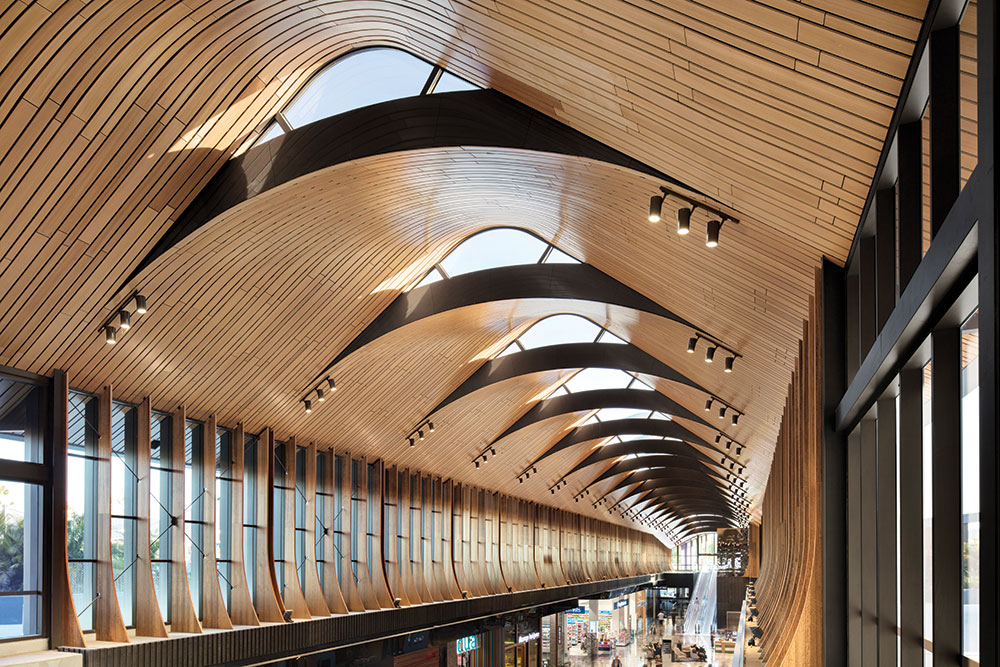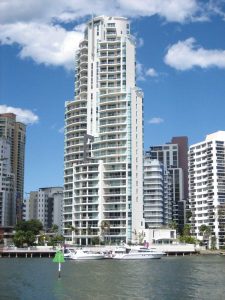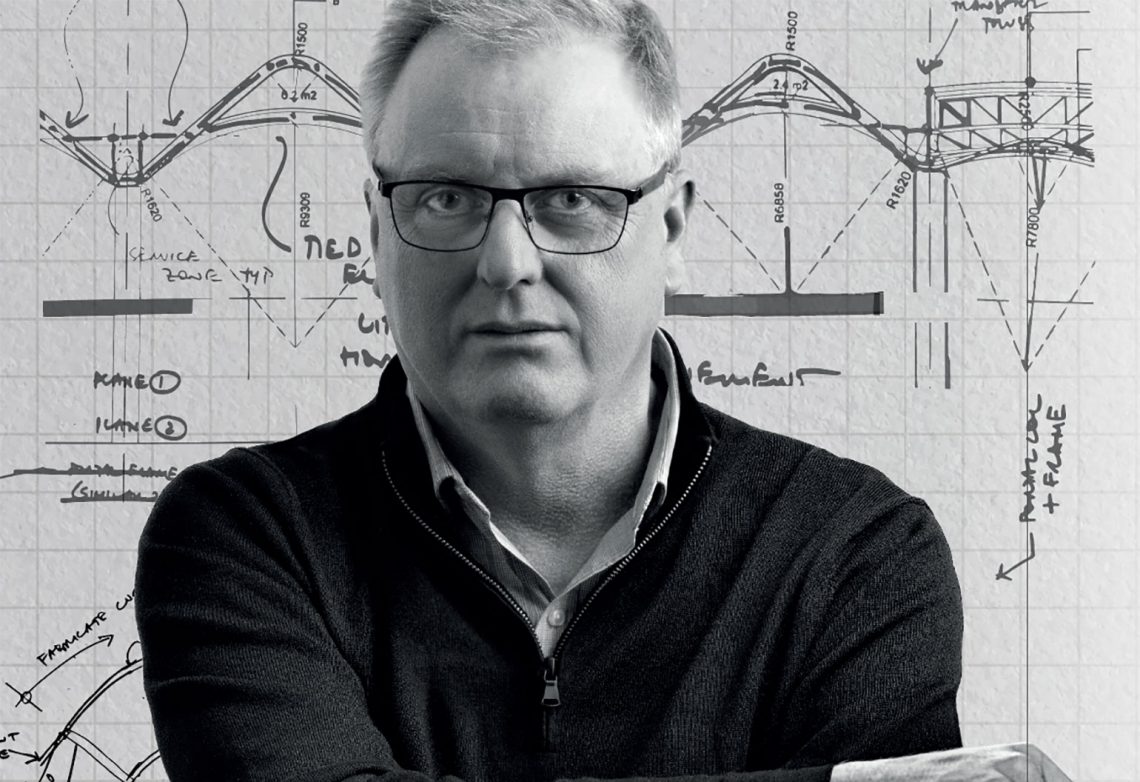Structural engineer Simon Pikusa believes engineers of today and tomorrow can only surpass expectation by mastering the fundamentals.
In the office of structural and civil engineering consultancy MPN Consulting, the area in which Director Simon Pikusa FIEAust CPEng works is fondly known by his colleagues as “Jurassic Park”.
It is filled with things that seem antiquated in the digital design world: textbooks and standards publications, compasses and set squares, pencils and sketch pads.
It’s easy to pigeonhole Pikusa as a talented engineer who is circumspect about joining the technology party. But, in fact, the opposite is true.
“We’re engineers, not Luddites,” he smiled.
“Engineers will always grab technology and run with it. We’ll do things with technology that we haven’t yet dreamed of, but to do that we have to get the basics right.”
Those basics, Pikusa said, include an understanding of form, proportion and scale, and the vital need for human scrutiny of design to ensure these are well considered and in the desired balance.
This then allows greater value to be extracted from new design technologies.
“Form is about whether it’s a slab, a beam or a truss,” he explained.
“Proportion is whether it’s stocky or slender. And scale is about material and is poorly understood, but if you don’t get it right, things will fall down. These are three human tools, and they’re pencil and paper things. You then use them to navigate through all the wonderful technology that’s available.”
Consider artificial intelligence in future engineering and construction software, Pikusa said.
For AI to do its job, it must be fed data sets. If engineers don’t understand their basics, that data will not identify small errors that could quickly turn into something far worse.
“This became clear to me when we were working on the Wave Roof,” he explained, referring to Robina Market Hall on the Gold Coast.
“What technology has fundamentally changed is model sharing. When I started in engineering, we got drawings from an architect, then put some butter paper over it and sketched on it. Now, we’re receiving and sending digital models.
“When I received those files for the Wave Roof, I felt we’d lost some human review. It felt as if we’d lost the ability to look at something and check that it’s right.
“The plus side of technology is that you can create complex structures. You can optimise them and derive great efficiencies. You can do this rapidly and accurately and remove some of the human errors we used to have before.
“But if something in there is not right, you’ve lost the engineer’s ability to scrutinise it. That’s unacceptable, because ultimately we’re responsible for it.”
The human element, Pikusa said, is the ability to work on a drawing, or to do a simple sketch, and see immediately whether it will work, whether it’s possible, whether it looks right. It’s this ability that can save an engineer from one day walking on to a site and realising, during a build, that something has gone wrong.

The power to solve problems
Such skills, gradually being watered down as the use of technology makes them seem redundant, also impress clients and partners.
Adam Reece, senior project manager at Buildcorp, worked with Pikusa and his colleagues on the Valley Metro Redevelopment project in Brisbane’s Fortitude Valley.
He recalls a meeting in which the project team was discussing the possibility of a major design change.
“Typically, an engineer will say that if we want to do a design change, then they’ll need to go back and run it through the model, then they’ll be able to get back to us,” Reece said. “But the team at MPN Consulting never mention a model. It simply never comes up.
“When they’re in meetings, they will sketch out designs for you on the spot to show you what they’re thinking.”
As an example, Reece mentioned a change the team wanted to make to a main entrance to a railway station.
“It was just an awning, but it was over the main entrance, so we had to keep that entrance open at all times,” he said.
“The original idea was to completely remove the whole structure and then rebuild it. We had a design meeting and asked if we could maintain the existing structure and build off it.
“Simon pulled out the old drawings, had a look and put a few sketches down. Then he said, ‘Yes, that can work. We can make that happen’.
“When you have those skills, those competencies, you don’t need to go back and sit behind a computer. And we don’t have to wait a few days for an answer by email.”
Such knowledge lends itself to powerful problem-solving capabilities, Reece said. Compare a tradesperson who can build a complex piece of furniture by hand from scratch to another who has only ever learnt to use power tools and pre-cut materials.
“Technology is fantastic in terms of being more efficient and allowing greater productivity,” Reece said.
“It offers an easier way to get something done when you’re following a specific set of rules and designs. But when things change, when problems and challenges are introduced, it’s that old-school knowledge that enables brilliant solutions and innovation.”
Building a career
Pikusa’s father was an architect who eventually went into academia. When Pikusa was young, he would sometimes accompany his dad to sites and often found himself wondering why a column was a particular width, why bars were sticking out of walls, how everything seemed in such balance on some builds and out of kilter on others.
In 1994, as he began his Master of Engineering and Technology Management at the University of Queensland, he took a job with MPN Consulting, where he thought he might stay for a year or two.
“I’m still here, almost 30 years later,” he said. “We’re a small practice, typically no more than 40 people. All of our directors are people that are more comfortable in this type of organisation than a large firm.”
That’s not to say business is easy, Pikusa said. The model that has worked for the last four decades is changing as larger firms begin to spread their services into niche areas and as technology and, indeed, the COVID-19 pandemic, reduce the appetite for face-to-face relationships.
Monumental shift
A great deal of past business has come from clients who have wanted a director of the engineering consultancy to attend meetings, oversee projects and be available. Clients have included major asset owners in all property sectors. Pikusa mentions two projects in particular.

One is the “Rocket”, a contemporary multi-level office building featuring a 12,000 m2 profile, which has become a landmark in Robina. The other is “Sentinel”, a 30-level residential tower designed as a tiered building form at Main River in Surfers Paradise.
The scope of work has included major retail centres; industrial and process facilities; education, residential and office buildings; refurbishments; major land developments; road and drainage works and so on.
“The fundamental relationship we offer to the end asset owner is always a strong one,” Pikusa said.
“That is typically a big part of our client’s decision-making process in choosing to work with us.”
Already though, the pandemic is altering the type of work that is coming across Pikusa’s desk.
For example, there is a lot of work right now around the repurposing of retail centres and office buildings. The nature and purpose of buildings has been permanently altered by the pandemic. Property managers are competing to offer a new experience to tenants, owners, customers and employees.
While online retail has had significant effects on department stores, for example, there is still a need for people to have a central place to visit. Whether it’s to wander aimlessly, spend time with family or get some work done, such large spaces will always be necessary.
“These buildings are usually in good positions and near transport,” Pikusa said. “So, we’re getting into these places, cutting holes and putting in new things and tinkering and reusing, repurposing and reassessing.”
Pace of problem solving is going to become increasingly important as engineering moves into a technology driven future, Pikusa believes. The best solutions are going to come from those that have the ability to run a human eye over the design challenge.
“We have to be increasingly nimble and innovative,” he said.
“We have to solve bigger problems more quickly. That will require a mix of great engineering know-how and brilliant technology.”
“Engineers won’t be doing the same job over and over again, but they will be central to the reshaping of the way society works. That’s why it’s vital that they have the tools to do their job well.”
Mix and match
How are buildings changing? Structural engineer Rob Burns CPEng, a director at MPN Consulting, said single purpose is changing to multi-purpose.

For example, car showrooms are being added to shopping centres, as is a far greater mix of leisure-oriented operations such as gymnasiums, entertainment venues, restaurants, cafes, massage clinics, playgrounds and barber shops containing licensed bars.
Office and residential spaces are merging with retail centres, too, as businesses decentralise, and people seek greater work-life balance. Office buildings themselves are facing a momentous change of purpose, with childcare facilities being introduced as well as more open, shared and breakout spaces, mixed-purpose facilities and other inclusions that give office buildings more of a community feel and less of a work-centric obsession.
“The type of knowledge that Simon shares is important in this type of fast-changing environment,” Burns said. “It doesn’t just assist with design and proportion, etc., but it also helps enormously with quickly assessing options from the start.”
“That’s the benefit of time-tested rules of thumb and other similar knowledge. It allows us to review options and solve problems and recognise solutions quickly and with confidence. We can then use great tech to progress that solution.”



